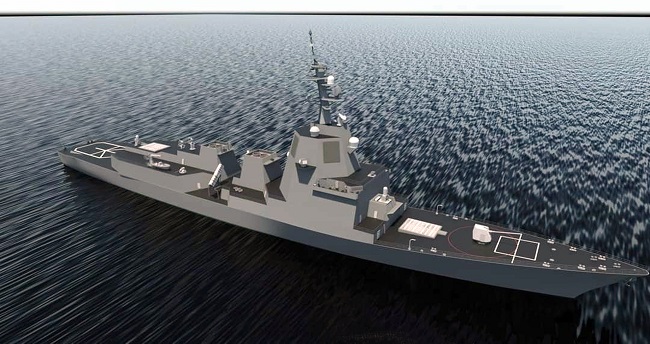
During the presentation of the latest edition of the Defence White Paper, on 12 July, the Japanese Ministry of Defence released new and interesting details for the ASEV (Aegis System Equipped Vessel) programme, i.e. the missile-launching naval units equipped with the AEGIS operational management system and dedicated to defence against ballistic missiles.
The document also contains an infographic that provides general indications on the configuration of the 2 units envisaged by the programme, the first of which is scheduled to be commissioned at the end of March 2028 and the second a year later.
The ASEV programme was launched to replace the AEGIS ASHORE programme, which had raised some political controversy. Today, the ASEV project also shows clear progress in terms of equipment.
First, the Mk.41 cells will be 128, divided into a forward block aft of the traditional 127/62 Mk.45 Mod.4 gun and a block located on the aft superstructure. Missiles will include SM-3 Block IIIAs and the SM-6s, slaved to the AN/SPY-7(v)1 radar and the J7.B version of the AEGIS, successfully tested in April 2024 in connection with the ASEV programme.
These new units will also be equipped with CEC sensors (Cooperative Engagement Capability, which allow the engagement of targets discovered and tracked by other naval units, aircraft, or land-based radars) and with Japanese-made SSM-12 anti-ship missiles, probably positioned on the deckhouse between the forward tower and the forward funnel. In the future, the Japanese industry might develop a vertically launched version of the SSM-12, so as to eliminate ramps and attachments and thus further lowering the ship's radar signature. The two vessels appear to feature solutions already present on the MOGAMI frigates in terms of radar signatures.
According to the Japanese Ministry of Defence, the ASEVs will be 190 m long, 25 m wide and have a displacement of 12,000 t, a significant dimensional increase compared to the 8,200 t of the MAYA class destroyers, i.e. the most modern units of this category in service in the Japanese Navy.
In addition, the White Paper clearly mentions some margins for capacity growth, necessary to enable the engagement of supersonic weapons, to increase the range of anti-ship missiles, to install directed energy weapons, and to deploy TOMAHAWK cruise missiles, the latter of which can be launched from the Mk.41 and of which 400 examples are being acquired by Japan.
In terms of costs, the ASEV programme has been financed in 2024, already, with an allocation of about USD 2.3 billion for the finalisation of the project and the construction of the two planned vessels. To this figure must be added a USD 504 million package for ancillary activities of testing and experimentation, while it is possible that further funds will be made available in the coming financial years.
Lastly, the Japanese MoD clarified that the ASEV project has not yet been finalised and that in its final version it could be slightly different from what was disclosed in the White Paper.
From now and for the next 10 years, the Japanese Navy will be massively engaged in an overall fleet modernisation process that, in addition to the ASEVs, including the 13DDX missile launchers destroyers, the upgraded MOGAMI frigates and the TAIGEI class submarines duly equipped with lithium batteries.








.png)
